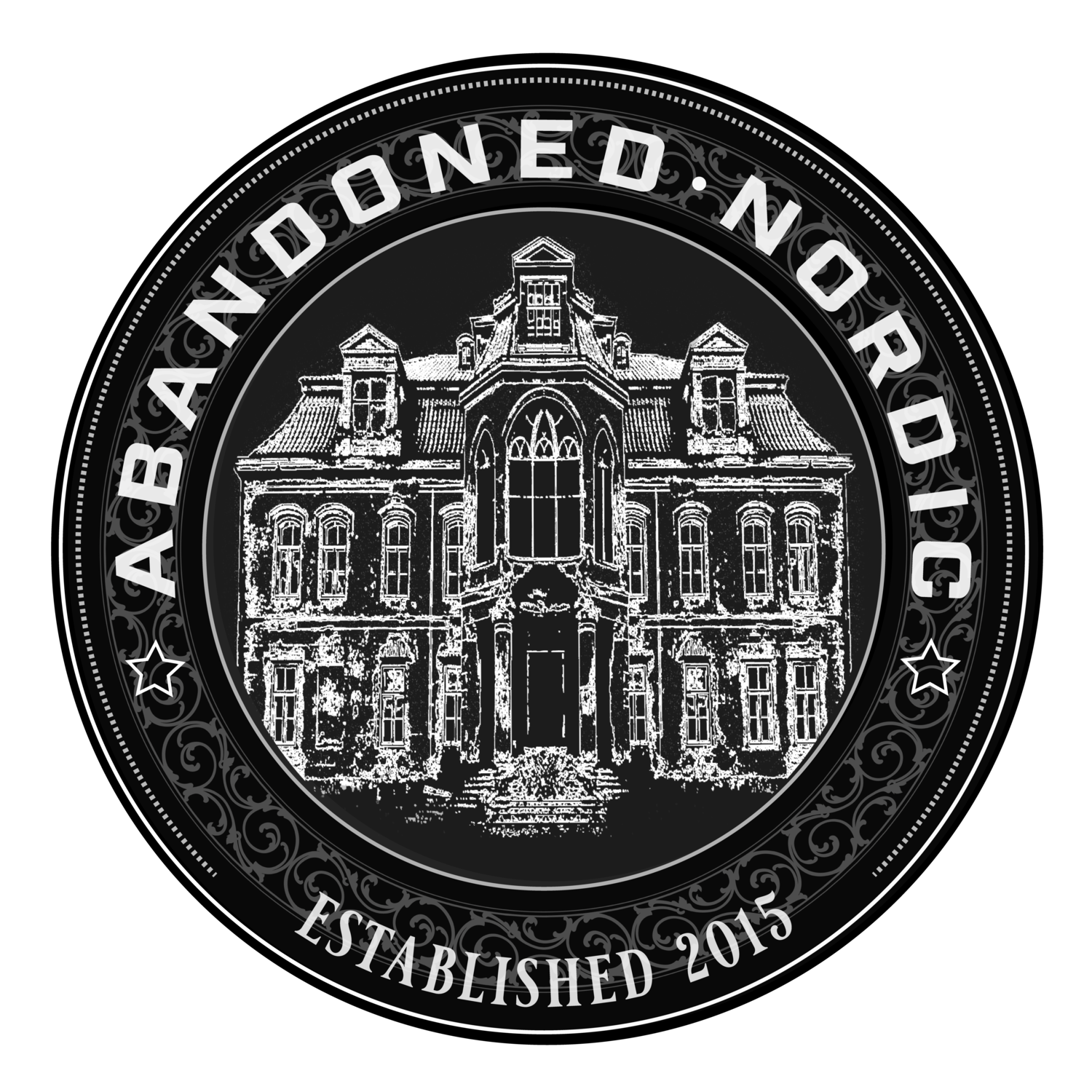Pulp Fiction
The Story of abandoned pulp mill
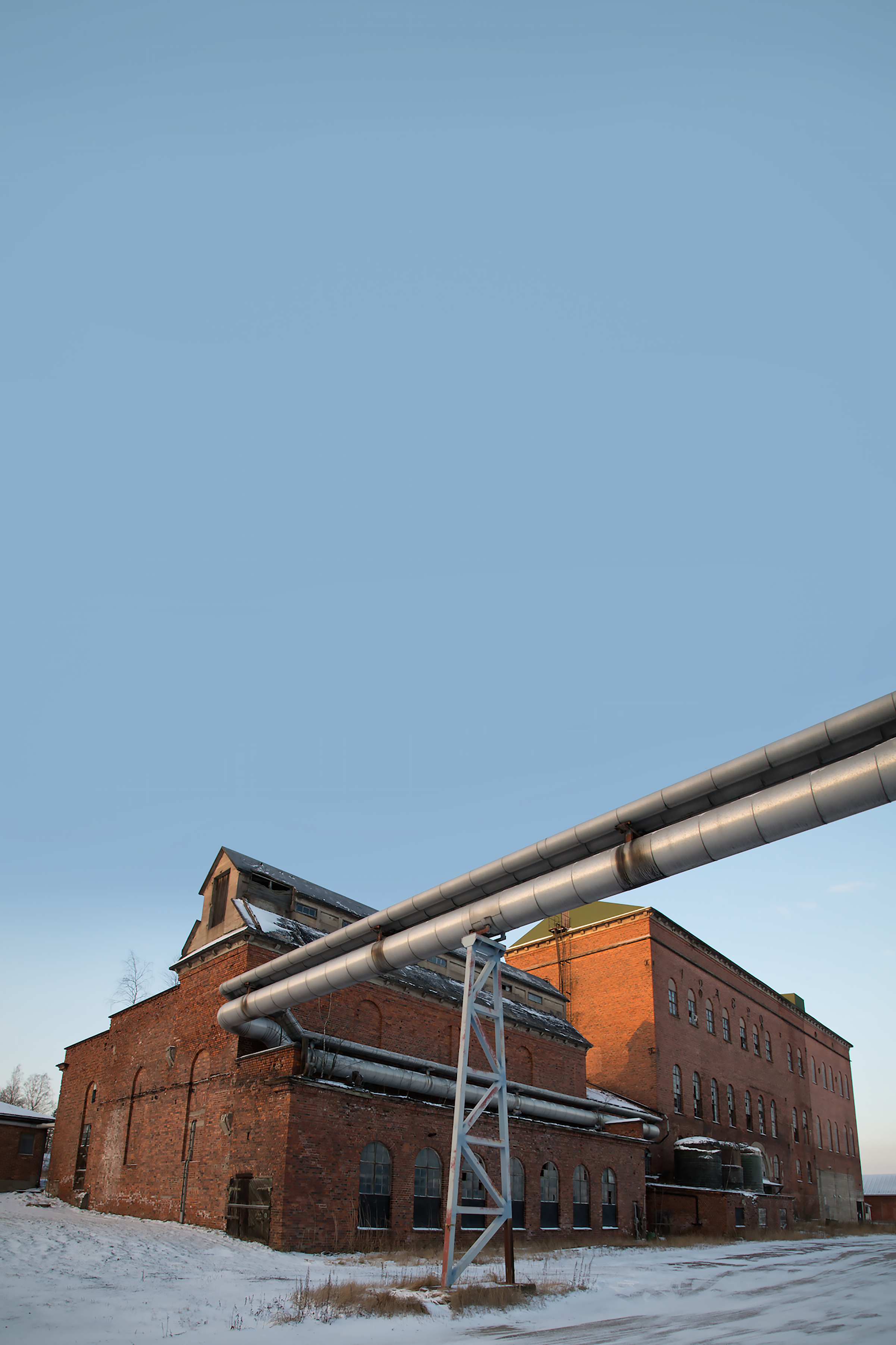
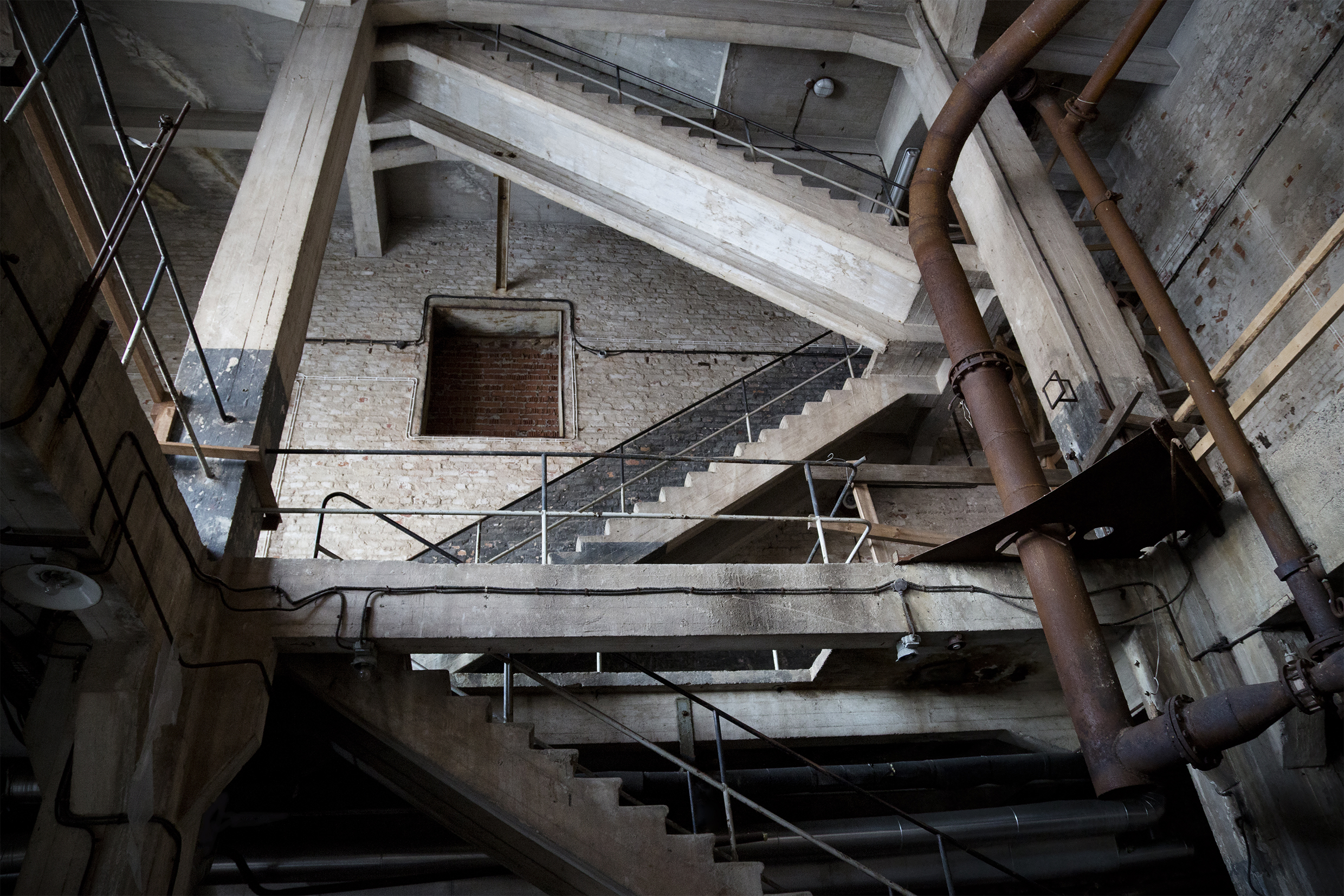
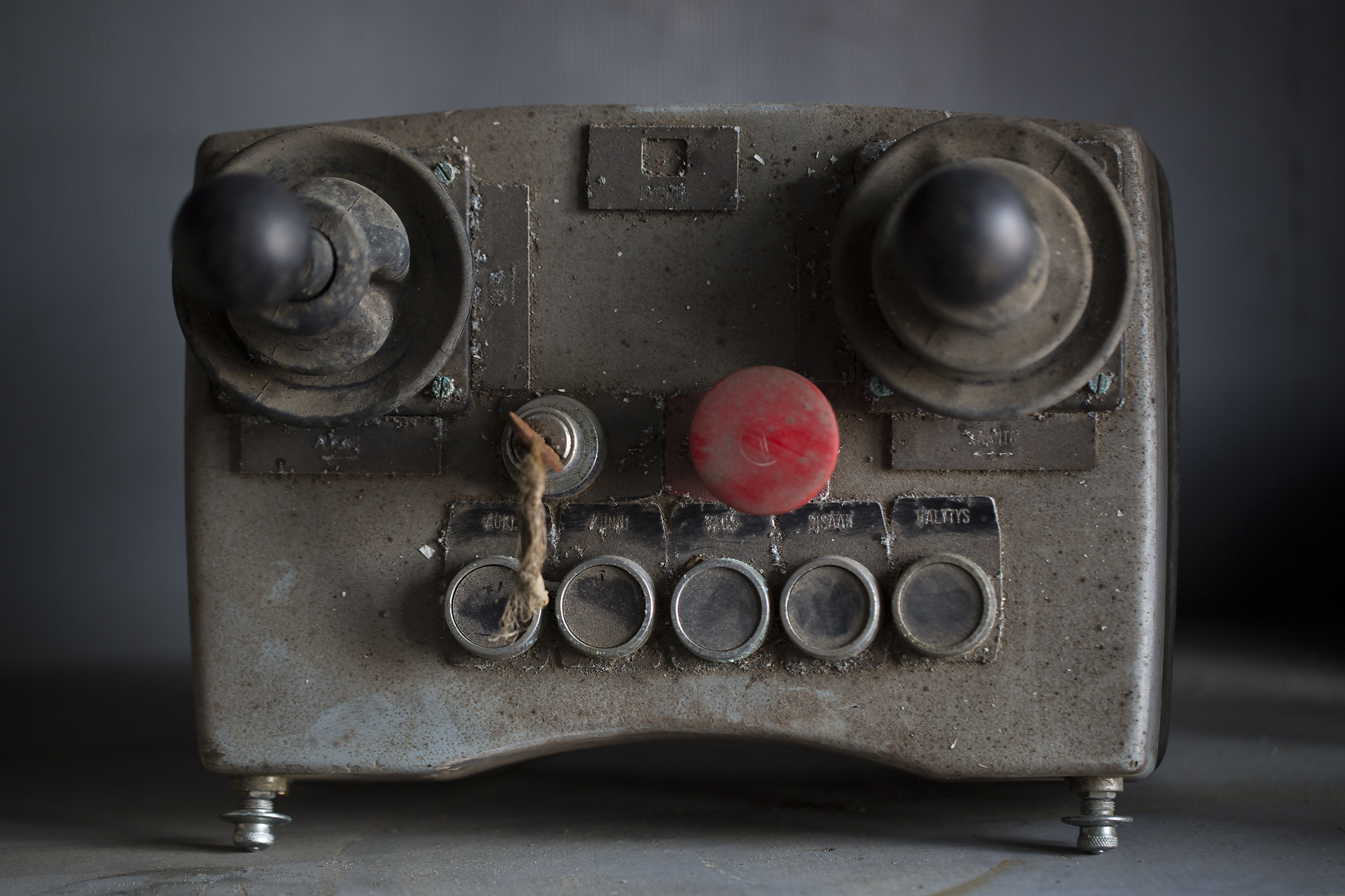
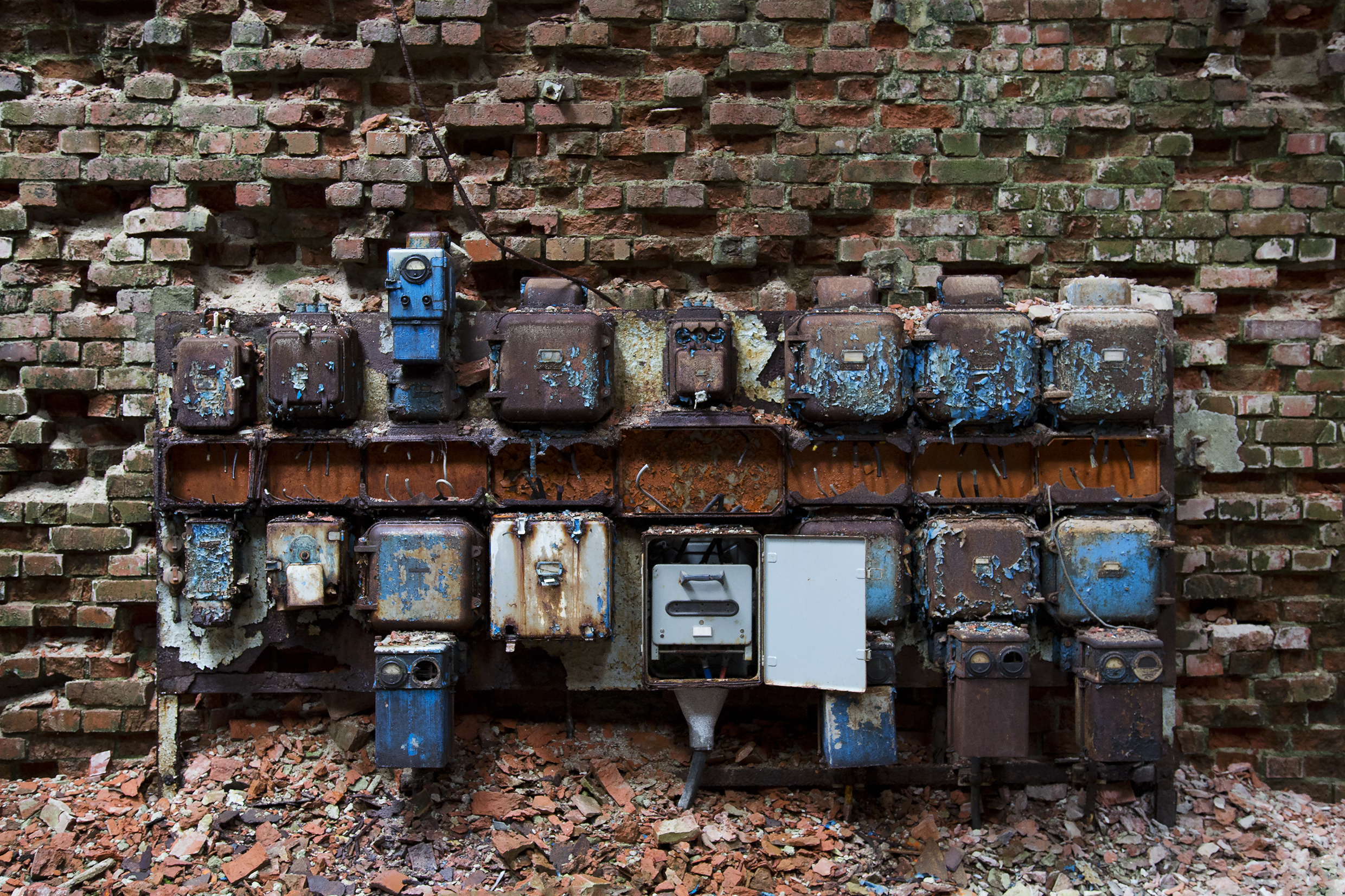

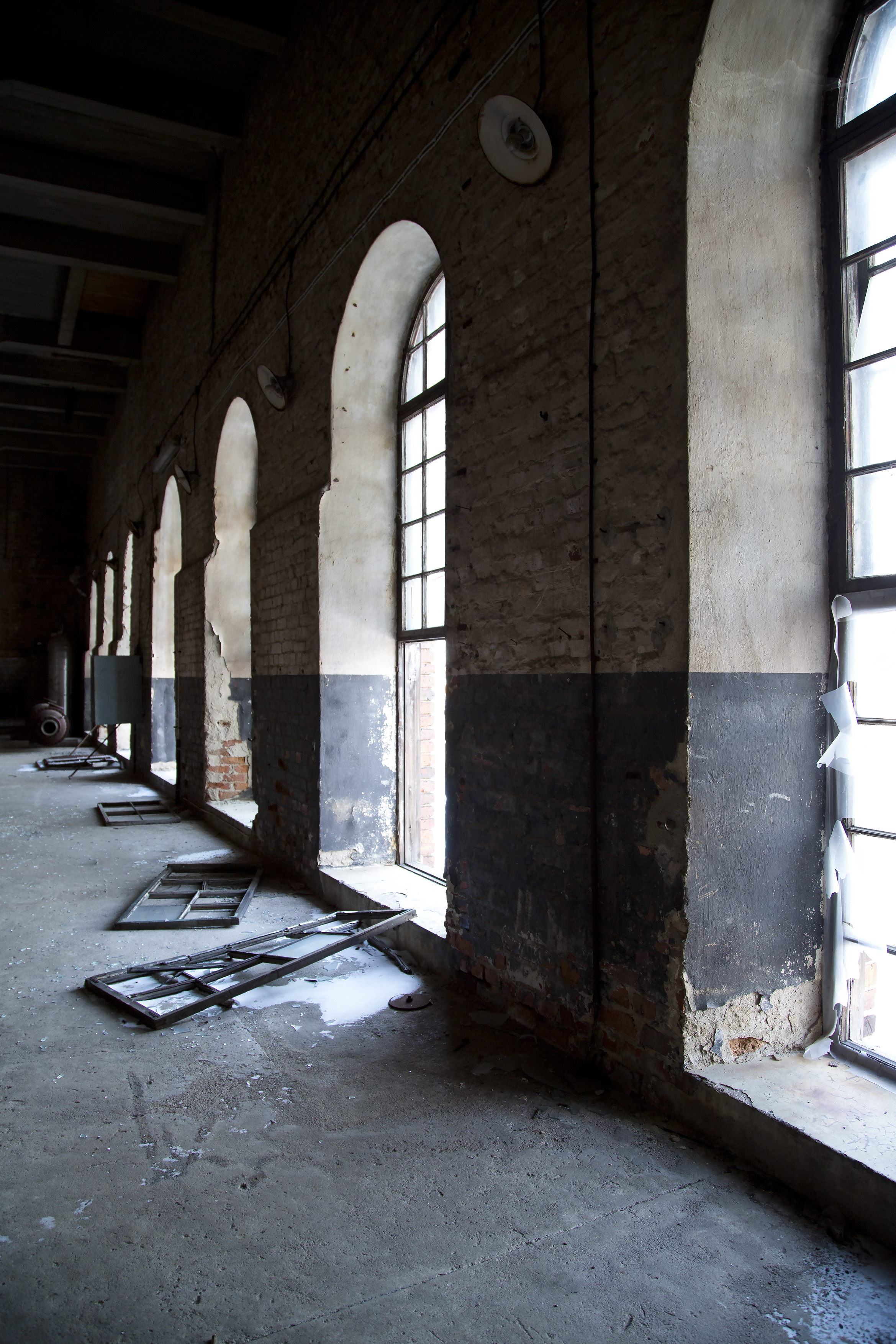
Welcome
We are driving in the middle of a group of industrial buildings in a small car. I am gazing at the surrounding area restlessly. The buildings rise towards the sky with their towers and smokestacks. The buildings lay their shadows over modern industrial compounds, and also over a beautiful red brick building which looks quite old compared to the surrounding ones. The brick building has been left alone and it stands peacefully in the middle of the industrial area like it had done something immoral. Fences surround the huge red complex. I am certain, that we have found what we are looking for. The shape of the building isn’t giving us any clues about what we might find inside. The ambiance is charged because this is our first visit to the abandoned pulp mill. The excitement which rises from a new abandoned site, hasn’t entirely struck us yet because we have only little idea what might be coming. Abandoned places, hospitals, factories, military bases, always have unique stories to tell and the whole tale starts to unfold when seeing the location from different perspectives. Looking through a lens of a camera doesn’t give you the whole picture. You have to build the frames to the story with help of libraries and archives. For us, the pulp mill hasn’t revealed the whole story yet, but the gate in front of us is sign of a good start. A cold key in my hand is telling us that the adventure is about to begin.
The conditions in the Nordic countries vary greatly depending on the season. Currently we are in Finland, a country of around five million inhabitants. Every year warm summer submits to the crisp freeze of winter. Abandoned locations live according to the seasons. In summer the locations bathe in sunlight but winters fill their corridors only with snow. Regardless of the season, adventures in these locations are hard for our equipment. Camera cases, tripod stands, and torches are carried sometimes in swelter, sometimes in snowdrift. This time, winter had reached us and snow was piling up against the walls of the pulp mill. A chilly wind had joined together with the atmosphere of the abandoned installation.
Tanja, my companion, had a clear mission. Her job is to record the ambiance with her camera and project what we are seeing to our followers and readers. She wouldn’t let go of her camera without a fight. For me, it has always been about writing. With words and sentences as my tools, I try to bind the story together. Our roles have always been clear because history mesmerizes me and a pen feels somehow right in my hand. Like always, division of the work is agreed silently when we are facing the bravely standing red giant.
A Cold Handshake
The pulp mill was established in 1893 and it is a part of Finnish industrial history, because it was one of the first sulfite pulp mills in Finland. The 20th century witnessed the rise and fall of sulfite pulp mills all around the country, and the last one was shut down in 1991. Sulfite and pulp seldom raise vivid emotions, but the pulp mills play nevertheless an important role in our daily lives through a specific consumer product: paper. The rise of the paper industry in Finland led the nation to the path of prosperity. The main component of paper is cellulose pulp, which was the end product of the pulp mill. The first sulfite pulp mill in world was build in Bergvik, Sweden in 1874. The foundations of pulp production here had been laid a couple of decades earlier in the sawmill industry which provided the raw materials later when the actual pulp mill started the fabrication of the pulp mass.
The fence surrounding the building greets us with a cold handshake. Fortunately I’m holding a key in my palm. The old padlock snaps and I push the gate open. Our small vehicle is heading towards the furthest corner of the complex which looks like a loading area of some sort. Tall wooden doors on the brick walls are nailed shut and beautiful windows form rows which rise up along the red walls. Only part of the windows are still intact. We park the car close to the point which could be our way in. We conduct the usual routine which consists of gearing up with multiple camera bags and lenses. We start our journey by foot towards the inner sections of the pulp mill. Dimensions of the buildings are vast. General layout of the inner rooms and corridors can’t be understood from outside the building. We take our first steps in soil because time has slowly but evidently carried the floor away.
The condition of the loading area is a reminder of the changing seasons. There are a few chains hanging from the ceiling and boxes filled with peculiar objects, bolts of some sort, are laying around the gritty ground. I see a cabinet made out of sheet metal with a sign on it which says “Hospital Stretcher”. Although coldness is crawling slowly inside our clothes, the excitement is luckily keeping us warm, for the moment. In the corner I see two rowing boats which were left to rot. I wonder the story behind these boats, but at the moment they only remind me of the proximity to the Baltic Sea which is blowing a cold breeze through the broken windows.
An old bulletin board decorates the grey wall. Glass of the board is filled up with mold, dust and smutch. There are a couple of notes still inside from the 1970’s. The language of the messages are peculiar but we have to remember that they originate from an era before us.
Everything metal around us is now red.
Step by step I am more impressed. My eyes are getting along the blend of light and dusk. Snowflakes are gently falling towards the floor, they originate from broken windows in the roof. Next room is pitch black. I see a forgotten guard booth standing on the side of the room. The roof planks have been laying on the floor for some time now, but the walls are still standing. Time is tearing this building down slowly, now when the guard has left his post. I’ve read about this pulp mill from history books which I dug up from the national archive.
Maybe I saw the guard in the old pictures, it is hard to tell.
A wooden step cracks violently beneath my foot. I feel my heart starting to beat more rapidly. The factory is abandoned but still I don’t have the feeling that I could wander the corridors completely unrestricted. Rooms are leading to more rooms and start to forget which ones I’ve already been to. In my journey I encounter strange old machines and I can only guess their purposes. Who were the operators of these weird apparatuses? I can’t recollect when was the last time I had so strange a feeling before this moment, standing here alone in the middle of this huge industrial mausoleum. Coldness keeps slowly advancing deeper and deeper beneath the layers of my clothing. In the moist and cold environment I am able to see my breath as it slowly rises and disappears into the shadows. It seems like the air inside the building is much colder than outside, strange.. Tanja is following my footsteps only a few rooms behind me. She is recording the scenery into photographs while my job is to complete the big picture with sentences. This work is challenging because strong emotions are hard to convert into words.
Patterns Evolving
Originally the building was constructed out of wood. In 1897 the first building was renewed and red brick replaced wood. Additional buildings were constructed during the history of the pulp mill and it is hard to tell which part is constructed when. It is hard to imagine that the main building is more than one hundred years old. The interiors were quite large back then because in 1915 there were over 80 people working in the factory. Old walls still show remnants of beautiful brick patterns. In my mind, I’m guessing that the most beautiful rooms with the patterns could be the oldest ones. In the beginning of the 20th century the pulp production increased and additional buildings and upgrades were made in the factory.
Unfortunately, World War I had quite tedious effects on export markets around Europe. Fortunately, demand of pulp mass was growing steadily inside the borders of soon to be Finland (Finland gained independence in 1917 and was still part of the Russian Empire). Still export of Finland was strongly built upon pulp and tensions started rising due to the hardships facing the industry. In 1918 the pulp mills of Finland united their forces and established an unique association which had one ambitious mission: to make the Finnish pulp a world-renowned industrial product.
There is a faint light peeking from a corner of the room. Door, or rather a hole where the door used to stand, is becoming visible as I walk towards it. I focus my flashlight on planks which are covered in mold. The path looks safe enough. I crouch and enter through the hole, my hood scrapes the brick ceiling and a couple of pieces peel off. The opening view is breathtaking. I am gazing at the main hall of the factory which is trying to reach the sky and extends far away. I’ve seen some photos of the room before our visit but they didn’t reveal the unbelievable dimensions. Below I can see the ground floor. It is riddled with passages and concrete pillars which have been supporting obviously something very heavy, perhaps some sort of machinery. Currently I am standing on the middle floor. Beautiful tall windows surround the floor and the corridor continues out of my sight. Old smaller machines are still standing on this floor, they are covered in oil and dust.
With the information gathered from the archives, I now know that the largest machines were torn down, but these smaller one still exist, however, the function of these machines remain a mystery to me. They look lonely like they are waiting for some wealthy industrialist to call them to service again. I try to call out to Tanja, but she is too far away to hear me. I hear a distant sound of her camera, maybe. I wonder if she has found something spectacular like I have. I let my eyes wander around the large hall. Beautiful and strange details fill my sight. Next to me, a staircase is leading to the upper level. The steps have been originally made out of thin metal and parts of them are missing. I’ve never been quite fond of heights and the fact that the steps are colored with rust and partly loose from the wall isn’t giving me any additional courage. I take a deep breath and start my climb towards the upper floor in a calm manner. Adrenaline starts rushing through my veins but it feels kind of pleasant. This is why we are here.
My boots are made for a journey just like this one. They are rugged and heavy. Made for urban exploration if you ask me. The middle floor of the main hall is getting smaller when I look down between my boots. The height is playing tricks on me. Small rocks fall down from the steps when I am ascending towards the upper floor which I can now see. What a relief, I think. I see Tanja standing at the same spot which I occupied few minutes earlier. She is now witnessing the same bold view. I don’t think that I am the only one who is impressed. I whistle and she tries to locate the source of the sound. She looks up and sees me although it is hard for her to take her eyes off of the view.
“I’m pretty sure that the stairs are safe”
I finally reach the upper floor. I feel comfort standing on a firm concrete ground instead of the shaky steps of the staircase. Coldness has reached my shoulders and my back again. Feeling of comfort doesn’t last long because there are huge holes in the middle of the room.
I cautiously take a peek from one of the holes which is around two meters in diameter. I see the brick pillars in a distance. I take a couple of steps back to ease my nausea. A scenario enters my mind in which Tanja is taking photos and accidentally takes too many steps backward straight into the hole. I shake the thought from my mind before continuing. A couple of pigeons fly unexpectedly over my head and I instinctively crouch. Maybe they were more scared of me, the unexpected guest. The scene could be straight from an old horror movie, funny. I can now see my next waypoint, a classic item in abandoned factories, a control panel.
Next to the wall, a dusty control panel rises from the floor. It has many buttons and small switches. Rust has taken control of the panel, but small labels are still visible on each button. “Vibrators - Silo 1” and “Vibrators - Silo 2”. Many buttons have fallen through the panel leaving only round holes for me to see. The panel is standing like an oversized music stand without the conductor. Who was the person turning the faint red switch for the last time? Is he still alive, could he tell me what these weird industrial words in the control panel mean?
Takeover
If one would travel through time and end up in Finland around one hundred years ago, the sight would not be pleasant. Finland was about to descend into internal chaos while the whole Europe was in flames. World War I meant harsh times for Europe and the violence landed also to the shores of Finland, a distant and small country in the far corner of Europe. Finland is one of the Nordic countries along with Sweden, Norway, Denmark and Iceland.
The Great Bear, Russia, is our neighboring country to the east and Russia’s proximity has always been clear in our culture, economy and also in warfare. The fall of the Russian Empire in 1917 led to disarray and in the smokes of the skirmish, Finland managed to announce its independency in December 1917. The freedom did not come without a price. Tensions inside the new republic grew and led to violence. In 1918 Finland was divided into two separate armed sides. The “white” side composed mainly of conservatives, merchants, industrialists, middle- and upper class factions and the “red” side from agrarian and industrial workers. Germany supported the “whites” and Russia backed up the “reds”.
The Finnish Civil War had begun and the pulp mill played a small role in the sad spectacle.
The leadership of the “whites” fled from Helsinki, the capital city of Finland, to Vaasa in January 1918. Before the the actual battles started between the opposing sides, the “whites” had started establishing units which were later called the Finnish White Guards. The purpose of these organized paramilitary units were to defend against the laborers. At the same time the laborers started organizing the establishment of their own guards, called not so unexpectedly as the Finnish Red Guards. A local branch of the Red Guard was established to a nearby town in October 1917. The leader of this guard was a man named Jalmari Suomi. Both sides started to gear up in the beginning of the civil war and many workers from the pulp mill factory joined up to the local Red Guard.
In February 1918 the “red” forces took hold of many cities in the southern parts of Finland. When they seized control of the city close to the pulp mill, the local Red Guard activated. Laborers of the pulp mill organized a coup and forced the management of the pulp mill to step down. The act made the owners of the pulp mill furious but they had no choice. The pulp milll belonged now to the workers. The reckless coup had a promising start but it did not last long. After three unfortunate days the pulp mill ran into unbearable troubles. The raw materials ran out quickly and so did money. In only three days the workers succeeded to run the pulp mill close to bankruptcy. The situation was embarrassing to the laborers because they had to ask the management to take over the pulp mill. The managers were glad to come back and without more confrontations the situation calmed down. A few months later the “red” forces had taken serious casualties and were retreating to St. Petersburg, Russia. When the leadership of the “whites” returned to the capital city, they were greeted not by their own troops but the baltic divisions of the German army, who had helped to overpower the “red” forces. Truce was never officially declared and no peace treaties were signed. Only deeps scars were left to Finnish society.
The years of the Finnish Civil War were a stage for hatred and hunger. Legend says that because of the unforeseen hunger, the pulp mass was even mixed into dough in order to make more bread for the hungry people of the newly formed republic.
I decide to continue my journey in the upper level of the pulp mill. Tanja has reached the upper level and seems astonished from the scenery. An excited smile has claimed the face of my exploring comrade and the coldness is somehow gone. The compound seems to continue forever and after every corner, new passages and corridors reveal themselves. Dead silence. We are the only persons in this massive place, the thought is haunting. In the end of the upper level we see a structure which resembles an iron balcony. I take careful steps on this small rusted structure afraid. I don’t hear the sound of metal twisting. It might be safe up here, meters and meters above yet another open hall. Heavy chains are hanging from the ceiling. An old beautiful elevator with a wooden door is standing across the structure. From the looks of it, I would say it is from the 1950’s. Tanja joins me on the balcony and silently admires the view. Maybe only a handful of people have seen the same sight in the last decades.
Family life
In the long history of the pulp mill, many workers and managers have walked these aisles which now rest in silence. The workers and their families formed a warm community which lived according to the routines of the factory. In the beginning of the 20th century workers and their family members were living in cramped quarters. 13 houses had been built for the workers of the pulp mill. Single rooms were inhabited by whole families and many mouths needed feeding. Crowded living quarters and shift work meant that the workers had to sleep in the hassles of playing children. The tenants had an obligation to spare some space for lonely workers who were wandering around the country to find places of work. The working conditions in the factory did not make the daily lives any easier for the laborers. A single shift lasted for 12 hours. Pulp was produced day and night and when the weekend came, the duration of the shift might have lasted for even 24 hours straight. Often the reek of the pulp forced the workers to wear gas masks. If the production line was at rest, additional buildings were being constructed.
The Cellulose Association had been busy planning for the triumphant success of the Finnish pulp. For this effort, the quality of the pulp had to be prime. A very special laboratory was constructed to the pulp mill in order to monitor the quality of the precious product. Purity meant quality. The working conditions started to improve step by step. The Working Hours Act in 1917 established the 8-hour working day and after the World War II a lively small town was thriving next to the factory. Old houses were torn down to make way for new ones. “Tearing down houses, and memories with them” was a common saying among the people.
Nowadays just a few industrial buildings are still standing from the era in Finland. Maybe we are so ashamed of failure that we have to erase the evidence of it as fast as possible. Fortunately the place has been left alone and now it was bringing shivers to our skins.
I am exploring the passages of the ground floor avidly. The heights are in the past and in my front I can see a passage to the next hall. The hall is the same one that I was looking at from the balcony a few moments earlier. A bright room is opening silently in front of me. Rusty tools and a couple of beer cans are laying around in a dusty corner. In the middle of the room I see something truly bizarre. A safe. The peculiar strongbox has been turned over to its back. Someone has obviously tried to open the door with force, without any luck though. It is not a safe that you can easily imagine. It is definitely not a grey cube with a rotating mechanism in front. It is yellowish-brown with a touch of red. It looks more like antique sideboard cabinet formed in a metal casting mold. The lock resembles an enigma. Two beautiful bars run across the surface and connect to the locking mechanism. Next to safe, a heavy plank is on the floor. With its help, the safe has been turned over. I decide to leave the safe at rest. I can imagine it being filled with old Finnish marks (former Finnish currency until the European Union and the Euro) and stock bonds. Maybe the last general manager decide to surprise his wife with some jewelry. Or maybe I just have an overactive imagination. My excitement about the content of this safe might be easily more valuable than the actual content. I salute this unique relic and hope that it brings at least the same amount of excitement to the next urban explorers than it brought to me. The only fortune we take with us from this hall is a photo of this memorable item.
We are now making our way to the side buildings which are filled with rooms smaller in dimensions. Some are filled with light, some are completely black. I turn my flashlight to different details and keep walking. A white helmet. A long hand saw. A teddy bear sitting next to a window looking melancholic What on earth was this stuffed toy doing here in the first place? Floors are covered with boxes containing bolts and screws. From the dark, I can see the form of a staircase leading to the second floor. Again, the steps are in bad shape but still I decide to start another session of careful climbing. The room is leading to another room. I stumble upon a corridor with weird pools of disgusting yellow goo. Pipes and planks stick out through the yellow surface. Pools of sodium hydroxide, more commonly known as lye. I am beginning to understand the ground plan of the massive factory although the place is a chaos constructed out of doors, stairways and shadows. I don’t hear the sound of Tanja’s camera anymore, only the dripping water hitting the molded boxes.
The roof of the next room has fallen on top of a large machine. The atmosphere in the room is gloomy. Black and charred walls are telling me about a fire which was loose in the room long ago. In the back of the room I see some control panels. The paint of the boards has left with the changing seasons. A lonely stove is standing firmly close to the back of the room. Again I am wondering about the mystery involving these odd details. The atmosphere in abandoned locations is always quite absurd because you never know what you are going to face before entering the site. It is hard the place the objects into a context without knowing their original purpose. Tanja stops next to me and what I can tell from her expression, the view confuses her too. We have now been traveling in the pulp mill for a couple of hours. In this journey we have stumbled on countless gloomy rooms, massive production halls and hundreds of mysterious details. Before our trip, I had gathered pieces of information about the building and the things that I have now seen are bringing life into the old photos and stories. Pictures from the archives are put into their right places in my mind when I continue my trip.
Setbacks
Years went by in the pulp mill. Additional buildings were constructed and old ones modernized. The community living in the shadow of the factory continued to live under constant changes. World War II meant hard times for the Finns. This time the Finns were not fighting against each other but the great eastern neighbor, The Soviet Union. The first shots were fired in 1939 and lasted until 1945. From here, many laborers marched to the battlefront but never returned. The war years meant hardship for the pulp mill financially. The war with the Soviet Union reflected to export markets and the harbors were empty. The whole industry was in deep transformation and the profitability of pulp mass came down fast.
The next setback happened when Finland had to devalue the Finnish mark (former Finnish currency) because the value of the currency collapsed. In the 1950’s the pulp mill made some serious improvements and the export markets were again showing good signs.
Although the mill managed to produce more and more pulp mass, competition in the industry had forced the prices down. In 1956 a large general strike shook the country and the next year Finland had to once again devalue its currency. The poor situation in the markets meant that the pulp mass had to stand still unusually long periods of time in the warehouse. Sometimes the wet mass started to grow mold. New equipment had to be installed in order to keep up with the pace of the markets and the industry. In the beginning of the 1960’s, the pulp mill had to lay off many workers in order to improve its profitability.
The problems started to pile up and the banks refused to finance the new improvements of the factory. Rumors about closing down the pulp mill started to circle.
Our adventure in this colossal factory is coming to an end. We are heading back through the familiar passageways. Hundreds of details and fascinating rooms have been saved into Tanja's camera. The atmosphere is recorded into the memory card, or at least we did our best trying to capture it. We don’t know if we can ever return here because there has been news about possible demolition of the pulp mill. Nevertheless we’ve had the privilege to make a journey into history, to a place where time stands still. Daylight hits my eyes when we return to our car. Coldness greets us once again and the excitement of our thrilling exploration is not warming us any more. For a moment, I had forgotten about the winter and the snow. I start to pack the car while looking at one of the side buildings. The building has been constructed into the side of the main building and we were walking in it just moments ago. The shape of the side building is not praiseworthy. I notice an extra row of windows.
“There are two floors in that building, were we on the second floor?”
“I don’t think so” Tanja replies and immediately starts to stare at the building.
The Gizmo Room
A smile enters my face, when I understand that the pulp mill hasn’t revealed all her secrets to us just yet. I forget about my fingers which are numb from the freezing climate and pace quickly around the side building. No entrance. Only a broken ladder to a closed window in the second floor. It does not surprise me that the ladder is rusted, I doubt the steps would even stand my weight. We head back to the first floor of the side building and start to search a way up. We advance room by room without any hope finding a passage to the second floor. Moist hallway, gloomy toilet, a room that resembles an office but no stairs or ladder. I see Tanja standing in the hallway looking at a pile of planks. I join her and understand that the planks are actually the stairs, or what is left of the stairs.Wooden steps are on the floor collecting moss. A handrail is hanging from the opening to the second floor. It is refusing to let go and join the molded woodware on the ground. We have no chance at all to enter the second floor from here. Maybe if we could somehow get our hands on a portable work ladder but without any help, we have no way to get up there. We decide to take our chances with the ladder and the closed window.
Lonely snowflakes are touching my hands when I start my climb. A semicircular metal band goes around the actual ladder. The metal hoop forms a pretty narrow passage so I have to leave the extra lenses and my backpack on the ground. I reach the end of the ladder and see that the window is partly broken. I manage to crawl through the window with pieces of glass raining to my neck. Glass splinters are sticking out from the window frame. I slip through the window and crash to the floor hitting some random junk. The room is filled with light.
“Is it worth the climb?” Tanja is shouting from the ground.
I sweep the remaining pieces of glass and some dust from my jacket and start to look around. The room is about the size of a large apartment room and in a pretty good shape. The walls are covered with closets and cupboards. The shelves of these cupboards are filled with strange gadgets and gizmos. This is a prize room for an urban explorer. The strange items are covered in dust and I just might be the first person to set a foot in this room in forty years. An old telephone on a table has been waiting for the next call since the 1970’s. Curled up playing cards lie disorganized on the same table. I lift one up and read the text on it. “The Finland Steamship Co. Ltd”. It was a Finnish steamship company (obviously) which was founded in 1883. Legendary ships like SS Arcturus, MS Finlandia and the casino cruise ship M/S Ilmatar sailed under the company flag. In 1976 the company changed its name to Effoa.
The room seems to be some sort of repair shop for small devices and electronic equipment. Headphones, controllers, wires and gauges are everywhere. The closets are filled with even more strange items. A small device, roughly the size of a table radio, resembles a sympathetic figure from a cartoon. The key has rusted into its locking mechanism. I walk back to the window and stick my head outside.
“Yep, it's worth the climb”. I can’t wait to see the expression on her face.
Tanja doesn’t need more convincing. She climbs up with agility. I head out to the other rooms while Tanja is looking at the shelves astounded. In the next room I see a big hole on the ground. I realize that the stairs used to lead to this room before nature took over. The floor is filled with mold and moss. Snap. A floorboard breaks off beneath my feet without a warning. My left leg goes through the floor but the boards next to the broken one can support my weight. I roll over and pull my leg from the hole. The incident leaves only smutch to my pants, and a raging heartbeat.
When I’m at my feet again I notice multiple tables that have strange looking brown bottles standing on top of them. I’ve seen bottles like these in antiquity shops. Some have labels on them which say “Acid”. The next room is giving me more clues about where I have arrived. Pipettes and test tubes are left in the closets. Papers on the floor used to be the pages of a logbook about chemical analyses. I had found the special laboratory which was used by the Cellulose Association.
The Last Bale
In the beginning of the 1970’s the pulp mill was under close scrutiny by the public authorities. Claims set by the environmental authorities were considered unreasonable and almost impossible to execute. The profitability of the pulp mill was again under the question because the improvements to meet the demands of the authorities would cost up to 80 million Finnish marks. This was a huge amount of money back then. This investment would have no effect whatsoever to the actual effectiveness of the factory. Six times more pulp mass should be produced in order to keep the pulp mill profitable. There wouldn’t even be enough raw materials to meet this increase. The authorities stated that the changes should be ready by the end of 1975. The changes were never even started and the final decision was made.
The factory was going to be closed for good.
July 7th, 1975 the last bale of pulp was packaged on the production line. The sorrowful workers of the factory walked over to last bale one by one and signed it. This was the end. The orchestra of the local voluntary fire brigade played in the closing ceremony which cradled the factory to a long sleep.
Tanja finished her last photoshoot on the second floor of the side building and we decided to head back to the ladder. We packed the cameras, tripods and lenses to the car. It was time to go home. The abandoned pulp mill had offered us an amazing journey to a forgotten world. This world surrounds us but reveals itself to only a few. Every abandoned building offers the passer-bys glimpses from the past. Every single detail in these buildings tells a tiny story which connects into a larger tale. These are the tales of many characters, families and exciting events. Solving out what happened in these sites is adventure on its own. Unfortunately the walls of these buildings are slowly turning into dust leaving only memories behind.
We drove through the gate and I stepped out from the car to close the lock. I was again holding the cold key in my palm. I looked at the old red building with appreciation and turned my back to the silent giant like many workers before me. Maybe I was the last, who knows.
